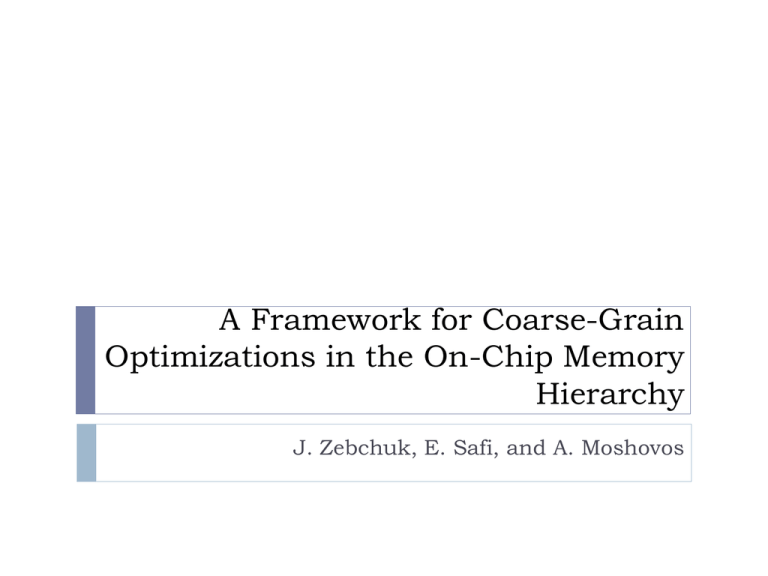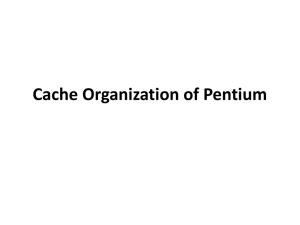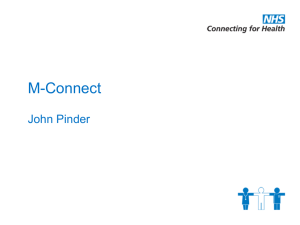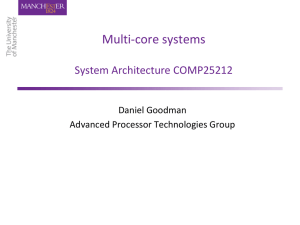slides
advertisement

A Framework for Coarse-Grain Optimizations in the On-Chip Memory Hierarchy J. Zebchuk, E. Safi, and A. Moshovos Introduction On-Chip caches will continue to grow To compensate for limited off-chip bandwidth On-Chip Area and Power consumption are the limiting factors Designs have to optimize in both directions Proposed Solution Coarse-Grain Tracking and Management Improvements for snoop-coherent shared memory multiprocessors Tracking information about multiple blocks belonging to coarser memory regions Performance Bandwidth Power Necessary information Whether a certain block in a region is cached Which specific blocks in a region are cached Implementation Idea Cache design with coarse-grain management as a priority RegionTracker (RT) framework Reduces overhead Eliminates imprecision Communication still uses fine-grain blocks Improvement Single lookup determines which, if any blocks are cached and where Simple block and region lookups Higher associativity is not necessary RegionTracker Requirements Replace only the tag array of a cache with a structure for inspecting and manipulating regions of several cache blocks Incorporates typical cache functionality Add-on functionality: Single lookup can determine whether a region is cached Single lookup can determine which blocks of a region are cached and where The cache supports region invalidation, migration and replacement RegionTracker Structure Assumption: 8MB, 16-way associative L2 cache, 64 byte blocks, 50-bit physical addresses and 1KB regions Region Vector Array (RVA) Evicted Region Buffer (ERB) Block Status Table (BST) Region Vector Array (RVA) Each entry tracks finegrain per block location information for a memory region Entries contain Region tag Several Block Information Fields (BLOFs) [one per block in the region] Identifies in which way the corresponding block is cached Evicted Region Buffer (ERB) Evicted RVA entries are copied into ERB Eliminates the need for multiple simultaneous block evictions Does not contain any datablocks 12 entries are sufficient to avoid performance losses Eagerly eviction of blocks from the oldest one third of its entries When an empty entry is not available, cache uses standard back-pressure mechanism to stall the cache Improvement: eager evictions Block Status Table (BST) Stores per block status information RVA stores information for more blocks than the number of blocks present in the cache (2x or 4x) BST stores: But only required for blocks that are resident in cache Storing this information in BST reduces storage requirements LRU information Block status bits BST breakpointers To avoid searching multiple RVA sets Contain RVA index bits that are not contained in the RVA index Functional Description Optimizations Snoop elimination Reduction of power and bandwidth in multiprocessors The first block access into region uses broadcast Eliminating unnecessary broadcasts All remote nodes report whether they have any blocks from that region cached Originating node determines whether the region is non-shared Subsequent requests to this region do not use broadcast Coarse-grain Coherence Tracking (CGCT) with Region Coherence Array (RCA) RegionScout RegionTracker can implement the functionality with a single bit addition per RVA entry For RegionScout, one sharing bit is added to each BLOF to indicate whether a block is shared or not Relation to Previous Coarse-Grain Cache Designs – Data Set Region (DSR) Relation to Previous Coarse-Grain Cache Designs – Decoupled Sectored Cache (DSC) DSC overcomes the problems of poor miss-rates and high associativity But not suitable for RegionTracker When a region tag is replaced, all BST sets in DSR must be scanned on-the-spot Consumes cache bandwidth and increasing cache latency Single access is not sufficient to identify whether a region is cached or which block in a region are cached DSC must scan multiple sets for precise identification DSC Improvements Smoothing Out Evictions (oDSC) Modified ERB Still needs to scan all blocks within an evicted region Precise Dual-Grain Tracking RegionTracker-DSC Extends oDSC Adds single bit BLOPs to each region tag Experiments 4 core CMP with shared L2 cache Based on Piranha cache design Experimental Workloads Simulations Performance: SMARTS 100K cycles warming 50K cycles measurements collection Performance measured as aggregate number of user instructions committed each cycle Miss rates Functional simulation of 2B cycles Each core executes one instruction per cycle Measurements taken only for the second billion Misses per 1K Instructions for Conventional Caches Sector Cache vs. RegionTracker Storage and Area Requirements 8MB, 16-way setassociative data arrays Number of bits: 50-bit address 3 state bits per block 64-byte blocks Relative Miss Rate vs. Tag Area Performance / Slowdown RT design uses 2K, 12-way set-associative RVA sets Average slowdown of 0.2% (+/-1.0%) Apache slowdown of 0.97% (+/- 2.9%) Query 17 had speedup of 0.9% (+/- 1.3%) RegionTracker Energy Snoop Broadcast Elimination Conclusion Small cost of implementation of RegionTracker Small increase in miss rate (1%) Minimal decrease in performance No area increase (actual reduction of 3-9%) Improvements Energy reductions: 33% Snoop Broadcast Elimination: 42% (up to 55% with BlockScout) Discussion Simulation: Collecting measurements only for 50k cycles? 4GHz CMP? Why are they using 12-way associative RVA instead of 16? Figure 6? Other questions…











